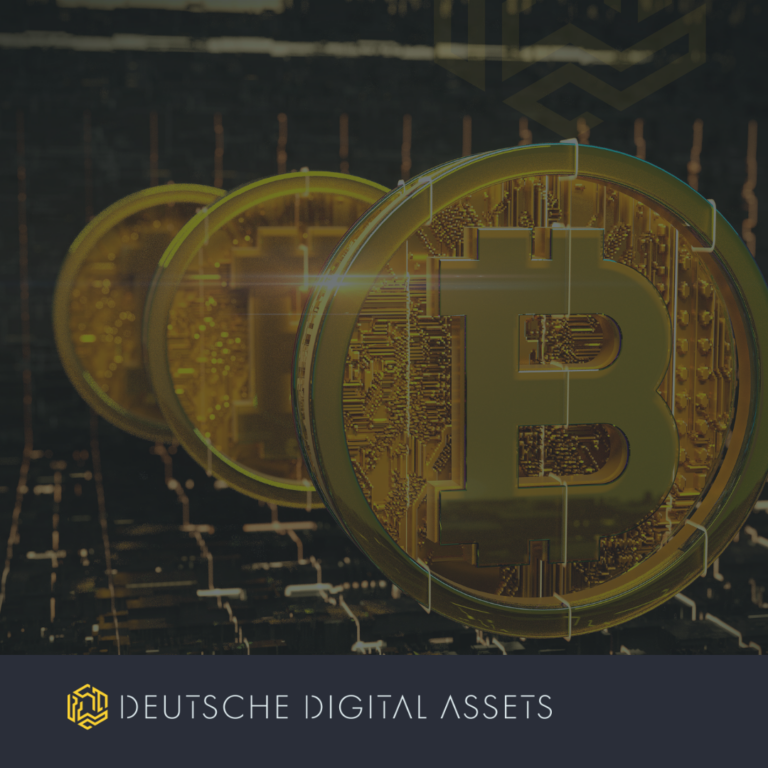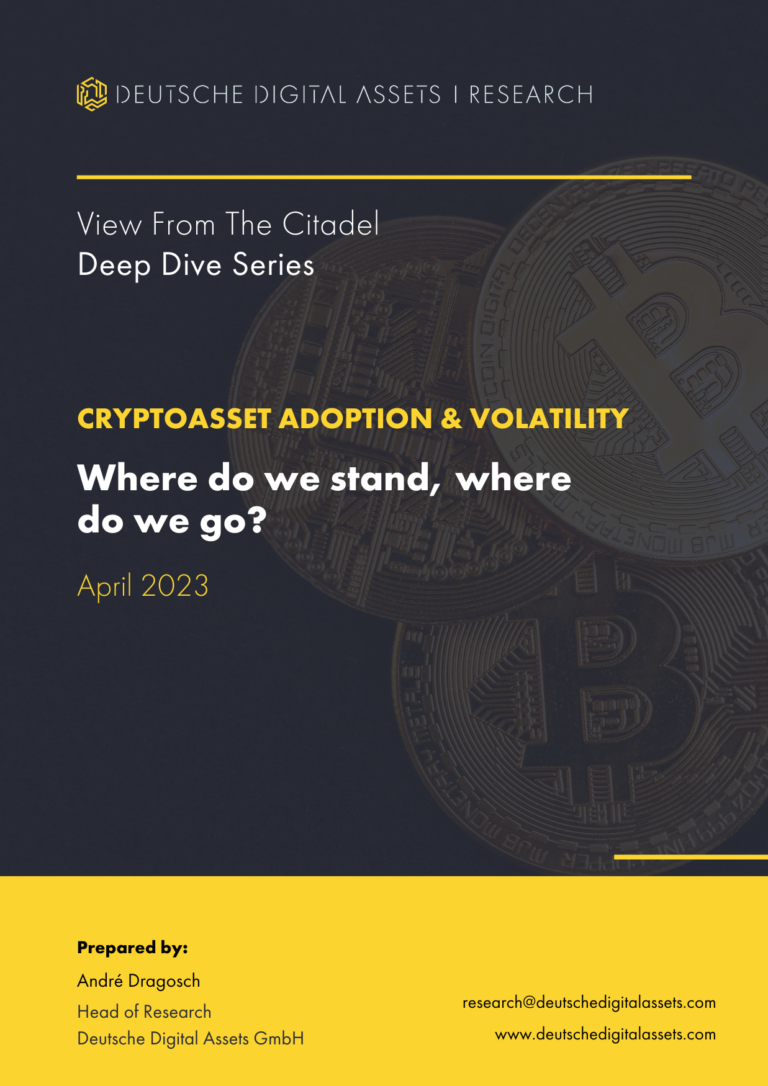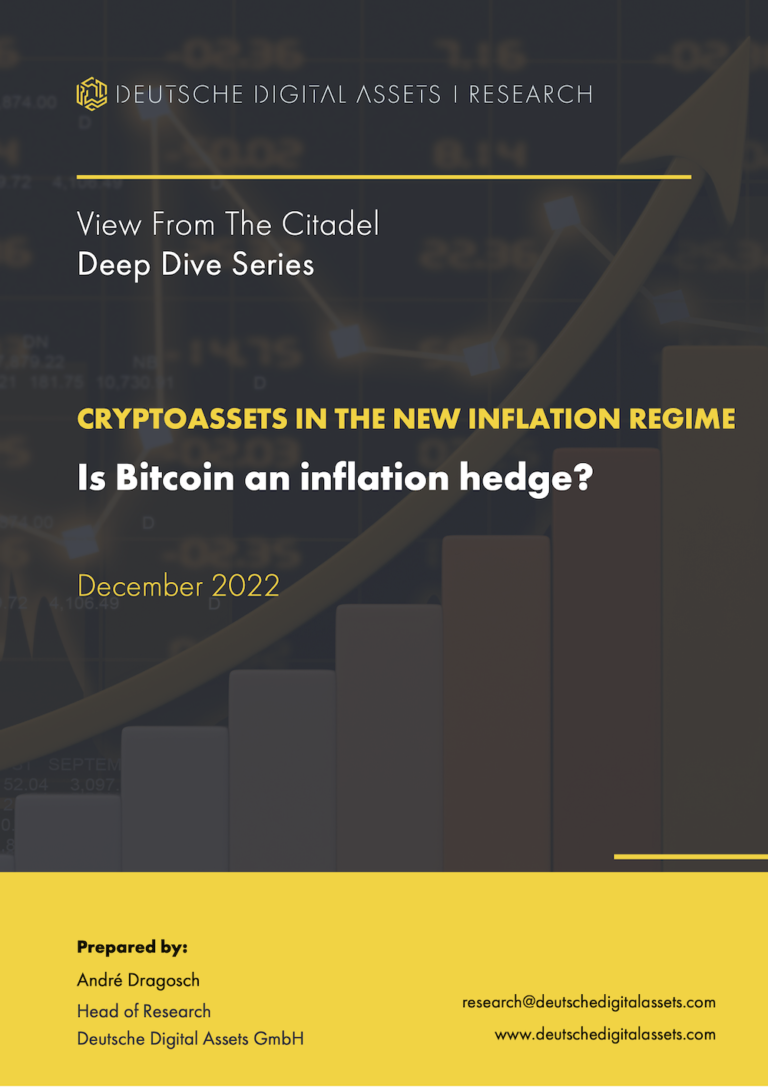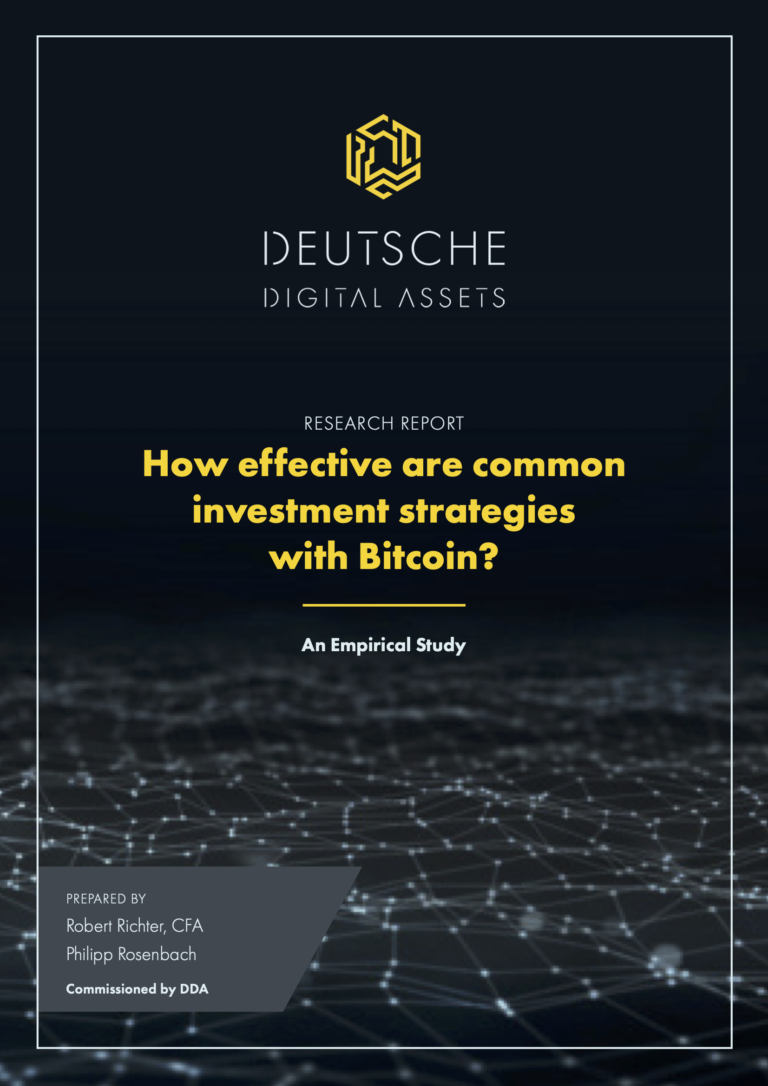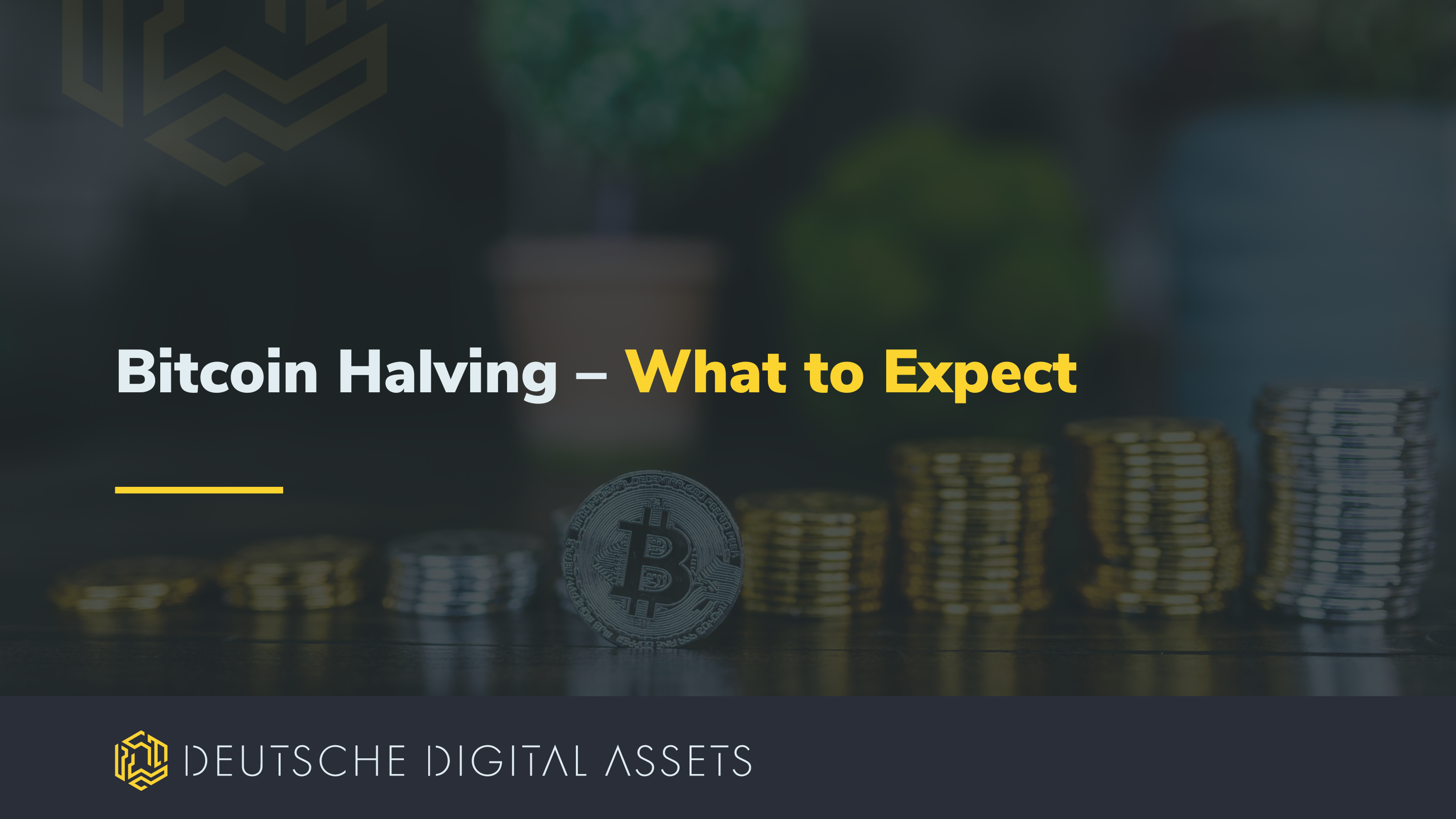
Bitcoin Halving – What to Expect
by Dominik Poiger, Chief Product Officer, DDA
The highly anticipated Bitcoin halving event in April 2024 is sending shockwaves through the cryptocurrency market. The time is not known yet, but the halving will happen on block 840,000 which is expected to be mined on 19 April 2024. Experts predict a parabolic bull run fueled by a unique convergence of supply and demand dynamics.
What is the Bitcoin halving?
Bitcoin’s core principle is its limited supply – only 21 million Bitcoins will ever be mined. The halving, which cuts the block reward for miners in half, further restricts the flow of new Bitcoins into the market. The halving is set programmatically to happen every 210,000 blocks (roughly every 4 years). In this halving, the block subsidy (i.e. the new bitcoin mined per block) will be cut from 6.25 BTC to 3.125 BTC per block.

When the Bitcoin network was started and the first block was mined, there was a subsidy of 50 bitcoins for each block. During the first halving in 2012, this was reduced to 25 bitcoins. At the second halving in 2016, the subsidy was then reduced to 12.5 bitcoins per block. The last halving took place in May 2020, when the subsidy was halved to 6.25 bitcoins per block.
The Bitcoin halving has far-reaching consequences for the Bitcoin ecosystem and the market itself .The most obvious effect is the reduction in the supply growth of new bitcoin mined every day, leading to a disinflationary effect. As fewer Bitcoins are created per block, the rate at which new Bitcoins are put into circulation slows down dramatically.This means that fewer Bitcoins are coming onto the market.
Holder Confidence Creates a Feedback Loop
Both long-term and short-term holders are exhibiting unwavering confidence in Bitcoin’s future. This “hodling” mentality, where investors choose not to sell their Bitcoin, further tightens the available supply, which is already at a very low level (as can be seen by blockchain data). With limited coins readily available for purchase, coupled with growing institutional interest, the stage is set for a potential surge in Bitcoin’s price.
The Potential Impact of the Halving on Price
While not guaranteed, the halving has the potential to significantly impact Bitcoin’s price. Historically, there has been a correlation between the halving and price increases, but this doesn’t guarantee the same outcome in 2024.
The logic behind the potential price surge is that the halving reduces the supply of new Bitcoins entering the market, while demand might rise due to perceived scarcity. With miners selling less and investors potentially more eager to buy, the price could increase. This narrative was especially emphasized after the launch of US-based Bitcoin ETFs that have attracted significant Assets under Management in a short period of time.
It’s important to note that this impact might not be immediate. Analyses by various market participants suggest it can take up to 100 days after the halving to see a statistically significant change in price.
The halving is an absolute game changer in the bitcoin mining industry that exposes less efficient operations as the miner revenue is cut in half from one day to the other. Struggling miners will try to sell coins in their reserves (if they have any) to fund their operations – which may add selling pressure. Profitable miners could sit back and wait until the dust settles to become more aggressive again in M&A activity or holding coins on the balance sheet.
With an increase in its scarcity due to these halvings, Bitcoin’s volatility has structurally decreased over time, as shown in the following chart:

While average volatility was 161% p.a. during the first epoch, it declined to 107% p.a., 78% p.a. and 63% p.a. in the 2nd, 3rd and 4th epoch, respectively. With the structural decrease in volatility and an increasing scarcity that is currently comparable to Gold (stock-to-flow ratio of ~60 years), the correlation of Bitcoin with respect to inflation expectations has increased over time as well.
Based on the underlying Bitcoin algorithm, the degree of scarcity will continue to increase over time. After the next halving, Bitcoin’s stock-to-flow ratio will already be double compared to gold (~124 years for Bitcoin versus ~60 years predicted for gold). By 2032, the stock-to-flow ratio of Bitcoin will have surpassed 500 years.
We expect the structural decline in Bitcoin volatility to continue with every halving and the rise in technological adoption. Therefore, we also expect the correlation and sensitivity of Bitcoin to inflation expectations to increase even further.
An increase in the adoption of Bitcoin as a savings & payment technology is also bound to decrease volatility structurally as investors and users become more heterogenous which usually has a dampening effect on volatility.
The Bottom Line
Bitcoin’s halving event is a widely anticipated event by the entire industry as it may have a significant impact on the Bitcoin price and thereby on the industry at large. Any prediction about Bitcoin’s price is – from our perspective – not warranted as the various impacts have been different across all past halving cycles. But, the halving event decreases the influx of new Bitcoin into circulation, potentially leading to increased demand amid perceived scarcity. With miners supplying less and (institutional) investors showing heightened interest, the stage could be set for a potential surge in Bitcoin’s value.
IMPORTANT INFORMATION
The material and information contained in this article is for informational purposes only.
Deutsche Digital Assets GmbH, its affiliates, and subsidiaries are not soliciting any action based upon such material. This article is neither investment advice nor a recommendation or solicitation to buy any securities.
Performance is unpredictable. Past performance is hence not an indication of any future performance.
You agree to do your own research and due diligence before making any investment decision with respect to securities or investment opportunities discussed herein.
Our articles and reports include forward-looking statements, estimates, projections, and opinions. These may prove to be substantially inaccurate and are inherently subject to significant risks and uncertainties beyond Deutsche Digital Assets GmbH’s control.
We believe all information contained herein is accurate, reliable and has been obtained from public sources. However, such information is presented “as is” without warranty of any kind.






